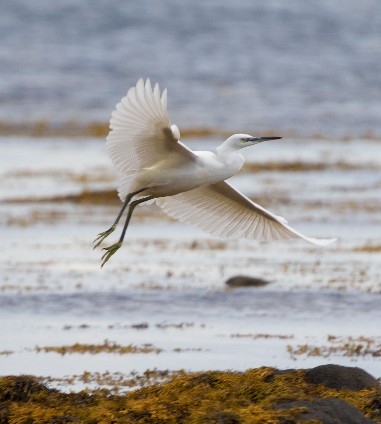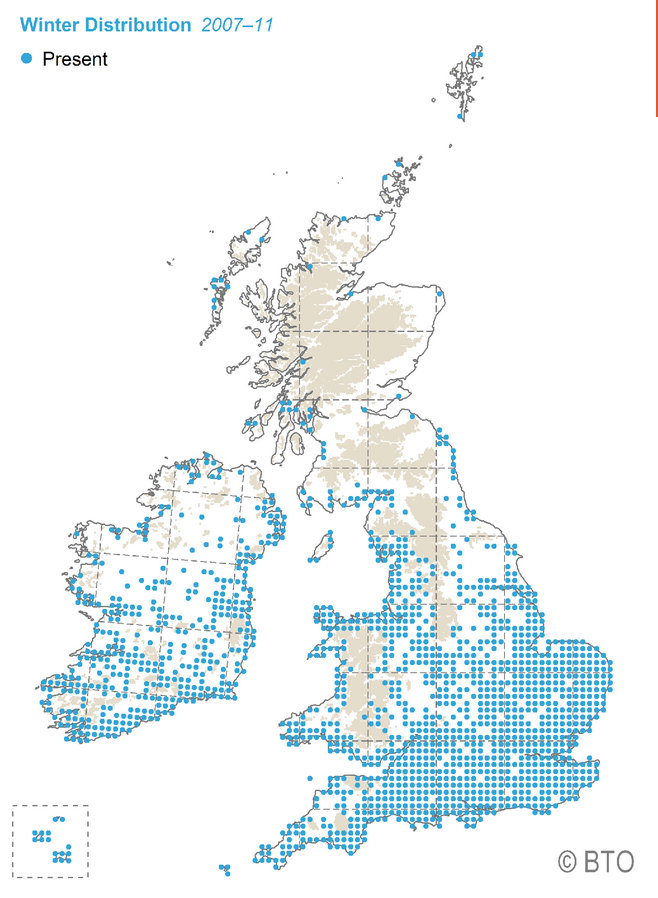Little Egret
Reports


On
Friday 4 August I received an email indicating that there was a Little Egret in
Whiting Bay on the shore opposite the primary school. The sighting was confirmed and the
information put out on the arranbirding website. This was to be the first of
ten such reports between Friday 4 and Monday 7 August. Most of these were from the Sandbraes end of
Whiting Bay but some were also from Clauchlands in Lamlash Bay. This was only
the second record of Little Egret on Arran. The first one, at Sliddery Shore on
1 July 2013, did not hang around, but at least this latest one stayed for a few
days, enabling many to enjoy this pure white heron with black legs and yellow
feet hunting in the shallow pools on the shore. The liveliest hunters among the
herons, they feed chiefly by walking through water and snapping at prey, or by
running and agitating the water with their feet to disturb prey. The excellent photographs by Nick Giles
capture the essence of the bird.
In
breeding plumage it has a black bill with attractive white plumes on crest,
back and chest. These plumes almost lead
to its demise in western Europe. At one time common in western Europe, it was
hunted extensively in the 19th century to provide plumes for the decoration of
hats and became locally extinct in northwestern Europe and scarce in the south.
Around 1950, conservation laws were introduced in southern Europe to protect
the species and their numbers began to increase. The birds also wander north in
late summer after the breeding season, and this tendency to disperse may have
assisted in the recent expansion of the bird's range. By the beginning of the
21st century the bird was breeding again in France, the Netherlands, Ireland
and Britain
It
first appeared in the UK in significant numbers in 1989 and first bred in
Dorset in 1996. Its colonization followed naturally from this range expansion
into western and northern France in previous decades.
The
map shows the winter records between 2007-11 from the national bird atlas
survey conducted by the BTO and its partners. This is hugely different to the
previous national winter atlas conducted between 1981-84 , when there was a
grand total of one record. The Little
Egret is now at home on numerous south coast sites, both as a breeding species
and as a winter visitor. The population increase has been rapid, with over 750
pairs breeding in nearly 70 colonies in 2008.
They are colonial nesters, building near water, in trees and bushes or
sometimes on rocks or cliffs. Colonies can range from a few nests up to a
couple of thousand, usually in association with other herons, including the
familiar Grey Heron.
Following
the first breeding record in England in 1996, the first in Ireland was 1997,
the first in Wales was 2002, but to date there is no confirmed breeding in
Scotland. It is really a bit strange that birds breed in Lancashire and
Northern Ireland, but not yet in Scotland--as far as is known. Indeed Mark
Holling of the Rare Breeding Birds Panel has put out a plea for any information
on possible breeding of Little Egret in Scotland. The expansion continues and
it can only be a matter of time before it is widespread in coastal and inland
water habitats in Scotland, including Arran.
